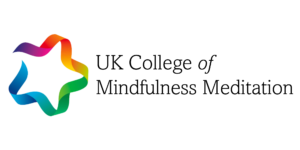The Obstacle is the Way: Mindfulness in Action
“The obstacle on the path becomes the path. Never forget, within every obstacle is an opportunity to practice.”
— Marcus Aurelius
This phrase from the Stoic philosopher Marcus Aurelius has inspired generations of thinkers, leaders, and practitioners. At first glance, it may seem counterintuitive: how can the difficulties, frustrations, and challenges we encounter become the very thing that guides us forward? Yet this idea resonates profoundly with mindfulness practice, particularly for Mindfulness Now teachers and the participants they support.
Obstacles as Invitations to Presence
Mindfulness teaches us to notice what arises in each moment—pleasant, unpleasant, or neutral—without judgment or resistance. Challenges are inevitable: thoughts that won’t settle, physical discomfort, difficult emotions, or external disruptions. Marcus Aurelius’ insight reminds us that these very obstacles are the fuel for our practice.
For teachers, this principle is essential: the difficulties encountered in teaching—managing a diverse group, handling unexpected questions, or navigating moments of tension—become opportunities to model mindfulness in real time. The obstacle is not a failure; it is the classroom.
Embodiment of Mindfulness
When teachers embody mindfulness, they show participants what is possible. Accepting obstacles, staying present, and responding with curiosity rather than reactivity becomes a live demonstration of practice. The obstacle—the disruptive thought, the challenging participant, the uncertainty in session planning—becomes a chance to cultivate patience, compassion, and equanimity.
In this way, teachers are not just sharing content; they are sharing a lived experience of mindfulness. Participants see that mindfulness is not about escaping life’s difficulties, but engaging with them fully and skillfully.

Obstacles Shape the Teaching
Every challenge encountered in a session or programme is a mirror. It shows where participants (and teachers) are holding tension, resisting reality, or avoiding discomfort. A question that seems off-topic, a participant who struggles to focus, or an unexpected scheduling issue—all are microcosms of life’s larger challenges.
Mindfulness Now teachers can use these moments to:
Pause and model presence
Reflect on how to guide the group with openness
Offer participants practical ways to engage with difficulty without judgment
These moments deepen learning. The obstacle is the teaching.
Obstacles as Learning Opportunities for Participants
Participants on the Mindfulness Now programme also encounter obstacles: wandering minds, self-critical thoughts, or emotional resistance. Using Marcus Aurelius’ insight, these challenges are not setbacks but essential elements of the journey.
Encouraging participants to notice obstacles, breathe into them, and explore them with curiosity helps them:
Recognize habitual patterns of resistance
Develop resilience and patience
Understand that mindfulness is about engaging fully with life, not escaping it
Each obstacle becomes a doorway to self-understanding, presence, and acceptance.
The Circle of Practice
For Mindfulness Now teachers, the principle “the obstacle is the way” creates a virtuous circle:
Teachers meet challenges with mindfulness.
Participants observe and learn through this embodied example.
Participants engage with their own obstacles as part of practice.
The entire learning environment deepens, showing that mindfulness is not a technique but a lived, shared process.
In other words, the very difficulties that might seem like barriers are, in fact, the curriculum.
Bringing It Into Your Practice
Notice the obstacle: When difficulty arises, pause and observe what is happening inside and around you.
Investigate with curiosity: Ask what this situation can teach you, or what opportunity it presents.
Respond skillfully: Choose your action from a place of clarity rather than reaction.
Reflect on learning: Consider how this challenge informs both your practice and your teaching.
By embracing the obstacles, we transform challenges into the core of our practice. As Marcus Aurelius reminds us, “The impediment to action advances action. What stands in the way becomes the way.”
For Mindfulness Now teachers and participants alike, obstacles are not interruptions—they are the heart of mindfulness itself. Each challenge is an invitation to embody presence, share the teaching authentically, and support others in discovering that even difficulty can be a path forward.
Further reading and resources
Marcus Aurelius — “The impediment to action advances action. What stands in the way becomes the way.” Goodreads+2TheCollector+2
The Obstacle Is the Way by Ryan Holiday — Examines this Stoic idea in depth and its application in modern life. Donald J. Robertson+2Farnam Street+2
“The Obstacle Becomes the Way” (Medium article) — Explores how challenges can become the pathway rather than a barrier. Medium
“What Stands in the Way Becomes the Way” (Shortform summary) — A concise explanation of how the quote can be applied in everyday contexts. Shortform
“5 Quotes from Marcus Aurelius’ Meditations Explained” — Gives broader context for the original quote and other related Stoic principles. TheCollector
“This Is The Most Common Obstacle” (Daily Stoic) — Demonstrates how the principle shows up in ordinary life, not just in big heroic moments. Daily Stoic













